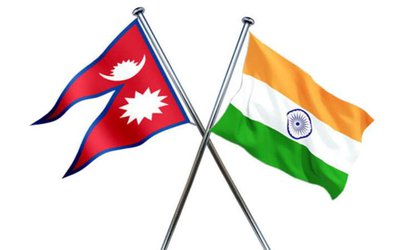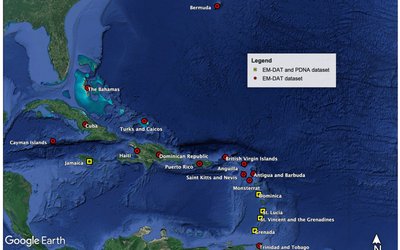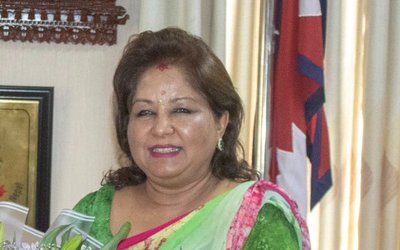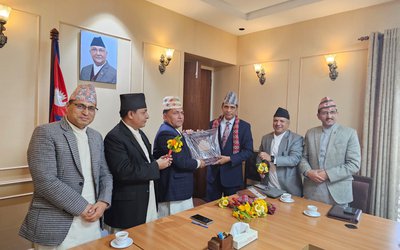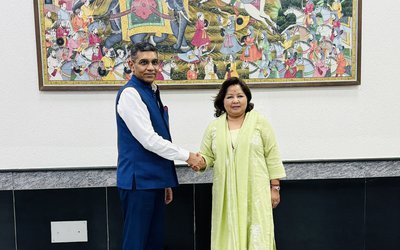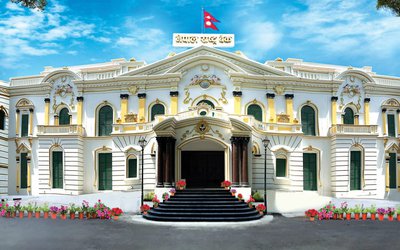
When my colleagues at Global College of Management (GCM) asked me to make a presentation at an international seminar they were organizing, I felt that I should look into the current state, both economic and political, of some countries and see how they were impacted by the wind of liberalization that blew across the planet some three decades ago. The topic chosen was approved and I was given the floor on the morning of December 14, 2019, to address an international gathering of some 200 people assembled at GCM. Since the interaction was good and many thought the selection of the topic was appropriate, I have taken the liberty here of drawing upon my presentation of that day.
Wind of liberalization began to blow across the planet during the late 1980s, encompassing political as well as an economic front in many countries. This resulted in the adoption of political pluralism and economic liberalism by many countries in the world. Eastern Europe went through a sea change on both fronts, the Soviet Union was officially disintegrated in 1991, Warsaw pact, a military alliance between then the Soviet Union and Eastern Europe\countries to counterbalance North Atlantic Treaty Organization (NATO), created by the United States in cooperation with Western Europe\countries, saw its natural death. Interestingly, Poland, which headquartered Warsaw, during the Soviet period, is now a member of NATO and has diversified its trade away from Russia. Under the liberal system adopted, Poland is freely trading with many countries and is concentrating on making good use of the vast potentialities that different sectors of its economy offer. Poland could emerge as a major economic power in not too distant a future. Indeed, liberalization has done Poland and many of its neighbors good.
In Asia, war-torn Vietnam opened up its economy and has succeeded in attracting capital from all over the world, which is being used productively to the benefit of investors and people there. This nation has become one of the favorite investment destinations in the world today. China, faced with the rising cost of labor, is shifting some of its industries to Vietnam, basically to maintain the product competitiveness. Despite Vietnam’s seeming objection to China’s claims and actions in the South China Sea, the country is wholeheartedly welcoming the latter’s investment and the ruling Communist Party there does not wish to offend its Chinese counterpart. Poverty-ridden Cambodia is also reaping the benefit of liberal economic policies adopted by the country. Investment friendly environment such as relatively cheap labor and fast-developing infrastructures have contributed a lot towards attracting global capital to these once-devastated countries. It may be noted that Cambodia’s tourism sector is significantly contributing to its economy in terms of employment generation and the inflow of foreign exchange. Sadly, some rulers in Asia decided to keep their countries unaffected by the wind of liberalization.
Despite being endowed with lots of resources (minerals, water, gas, forest and fertile land), these gifts of nature could not be properly utilized in Myanmar to the benefit of its people because the rulers (military Junta) there kept this resource-rich country politically and economically isolated from the rest of the world. Political and economic systems remained untouched by the wind of liberalization. Once the largest exporter of rice in the world, this nation is now behind Vietnam and Thailand. After a long period of isolation, Myanmar has opened up on both fronts and it is hoped that the money flowing in from both multilateral and bilateral sources is used properly to harness the immense potentiality of the economy.
The liberal winds shook the political system in Nepal, which led to the rehabilitation of the multiparty system in the country in place of the King-led partyless system and liberalization of the economy also proceeded meaningfully. Now a republic, Nepal, is still economically fragile and politically not very stable, despite being endowed with natural resources (water, forest and snow-covered mountains) and historical political changes and adherence to liberal economic policies. Due to our own problems, we have also not been able to take benefit from the impressive growth of the Chinese economy (second-largest economy in the world) and the Indian economy, which clearly is on the way, despite recent hiccups, to becoming a major economic power of global scale.
China began to liberalize its economy towards the latter half of the 1980s, which created a suitable condition in the country for the capital from all over the world to flow into it. This capital combined with cheap indigenous labor helped China produce a repertoire of commodities. Probably China to date is the low-cost producer of almost everything from footwear to satellites and these products have flooded the world market, giving China a huge trade surplus with most of its trading partners. It may be noted that China for years relied heavily on export-led growth but one can now see a paradigm shift in its policy as the country has decided to be happy with on domestic demand-driven sustainable growth of around 7 percent. This policy shift was necessary because many countries had begun to complain about China’s huge trade surplus with them. The United States of America, now in a full-fledged trade war with China, has accused the latter of enjoying a huge trade surplus with it, resorting to unfair trading practices e.g. keeping its currency artificially undervalued. The imposition of tariff by Trump administration on Chinese goods getting into the US and retaliatory imposition of tariff by China on American goods, mainly agricultural products, has begun to negatively impact global trade and output. Independent observers feel that the two largest economies are involved in a lose-lose-lose war.
China has made serious attempts to diversify its trade away from the US to European Union countries and countries that have joined its ambitious Belt and Road Initiative(BRI). China has to maintain its trade growth and is thus on the lookout for new markets, the latest being the Regional Comprehensive Economic Partnership(RCEP),a China spearheaded mechanism consisting of ASEAN countries, China, Japan, South Korea, Australia, New Zealand, and India, which together account for 40 percent of world trade,45 percent of global population and one-third of planet’s GDP. Prime Minister Narendra Modi of India remained short of signing the RCEP agreement during the ASEAN Summit in Bangkok recently may be because he wanted to make sure that India’s ballooning trade deficit with its neighbor does not further deteriorate. China is certain to further open its market to outsiders and continue to penetrate new markets because it has progressed a lot on the economic front through adherence to liberalism. The liberal wind was, however, forcefully stopped in 1989 from impacting its political system. China liberalized its economy little ahead of India.
Despite adherence to political pluralism after independence from Britain in the 1940s, India remained conservative on the economic front and had an annual growth rate of around 3 percent, popularly known in the world as Hindu Rate of Growth, prior to its opening during the period of Prime Minister Narasimha Rao. After liberalization, however, the Indian economy started growing by 8\9 percent per annum, enabling the government to execute targeted programs aimed at benefitting the poor and developing the relatively isolated areas in India. Probably buoyed by the impressive growth of the economy and the second landslide victory in a row, Prime Minister Modi has recently declared that India will have a 5 trillion dollar economy in 5 years. Unfortunately, however, this announcement has coincided with the slowing down of the economy, which could end up registering a growth of less than 6 percent this year. Indians have given serious thought to this and they believe that the economy could revert back to a growth of 7 percent through enhanced exports and modernization of agriculture.
The two economic powers (China and India) have undoubtedly benefitted from adherence to liberal economic policies, despite the fact that these two along with other powers do resort to protectionism occasionally. These two populous countries have serious problems between them but they seem to be determined not to let these interfere in matters related to bilateral trade and economic development. They are also seen cooperating with each other on matters related to global financial governance and world climate issue. Many countries in the world have taken advantage of the impressive growth of these economies because these countries are not only exporting goods to other countries but offer huge markets for products from other countries. As an exception, Nepal has not been benefitted, despite impressive growth for years in the neighborhood, due basically to problems of our own making. We have failed to harness the vast hydro potentiality of this nation, which was experiencing until recently torturous power outage hours of as much as 14 hours a day. In fact, there are many countries in the world with abundant resources but have failed to ensure a respectable level of living to its people. If there is anything in abundance in oil-rich countries (Iran, Iraq.Libya and Venezuela), it is continuing unrest and violence. People are fleeing violence and poverty, risking their lives. In the meanwhile, one should not forget to make a mention of the remarkable progress that countries like Singapore and South Korea have achieved, despite being without any mention-worthy resources. In either case, those at the helm of affairs have contributed a lot. Looking at the situation in Nepal, one feels like asking oneself a question- have we governed this country properly? Let us delve a bit into the state of our economy.
Despite being an agricultural country engaging 70 percent of the population and accounting for 33 percent of GDP, Nepal is importing lots of agricultural products from other countries, mainly India, for internal consumption. It may sound paradoxical but the reality is that this agricultural country imports rice, an important contributor to our GDP, in the amount of around Rs. 30 billion annually and import of fruits and green vegetables together approximate Rs. 25 billion. A positive correlation is seen between the performance of the farm sector and GDP, which registered a negative growth of 0.3 percent in 2001\02 and just expanded by o.6 percent in 2015\16 due mainly to the devastating earthquake of April 2015. The most worrisome fact about our economy is that no other sector is seen promising enough to replace agriculture as the dominant sector. Since we are importing everything ranging from fossil fuel to food and exporting very little, in most cases without much value addition, our trade imbalance has grown alarmingly, in most years exceeding the actual budgetary outlay. Almost every year, apportioned amount, especially capital expenditure, remains unspent. In recent years, the government has been slashing budgeted amount, which discourages investors from outside. Small wonder Nepal has seen less than half the pledged amount of foreign direct investment in each of the last five years. Due to weak production base and lack of tradable items, even our weak currency, which has depreciated by more than 400 percent in the last 20 years, has not been able to help exports the pitiable condition of which is exemplified by the sharp rise in a trade deficit of 300 percent in the last 10 years. Nepal government, therefore, has no choice but to proceed item-wise starting with agriculture and with a distinct timeline, to achieve self-sufficiency, which would reduce import and improve the trade balance. Let us also give serious thought to our declarations of achieving self-sufficiency in onion and rice production, which is likely to register a decline of 9 percent after increasing by 9 percent each in the previous two years. The government will have to make sure that the subsidy amount set aside in the budget does not remain unspent at the end of the year and farmers are guaranteed a reasonable price of their produce. Scarcity of labor to grow crops, high cost of production, low output prices and easy access to highly subsidized Indian farm products tend to encourage our farmers to get involved in off-farm work, both within and outside of Nepal, keeping the land fallow. Likewise, despite loud talks about hydropower potentiality and our wishes of exporting billions of dollars’ worth of power to India, we are relying on import of power from it to manage serious load shedding problems here. While talking about power export to India, its emphasis on solar, wind, nuclear and hydropower generation, in addition to cost aspect, will have to be given serious thought to. Hydropower generation, however, will have to be encouraged, even in the event of no availability of the Indian market, because the power generated can be used to replace petroleum products, which is our major import. A humble beginning could be made to replace LPG cylinders from the kitchens of households in a particular area in a given period of time. To encourage successful implementation of these kinds of programs with a distinct timeline, the government and the concerned agencies will have to intervene using fiscal and monetary tools. Nepal Electricity Authority could even think about the dual pricing system.
Nepal will have to be choosy in selecting items for production where we have a comparative advantage, giving proper thought to value addition aspect. Let us not forget that Nepal exported billions of rupees worth of carpets and garments in the past, which is still continuing in a reduced scale, but the economy did not benefit much because enhanced exports of these led to rising imports of different components used in them. Despite somewhat normalization of the tense trade relationship between the two largest economies of the world and Boris Johnson securing a comfortable majority in the recently held elections in Britain, which seems to have ended years-long confusion about the country's exit from EU, cooling economies and economic hardships faced by jobless people pose serious threat to the world and Nepal will have to learn to progress, confronting adverse conditions ahead. Hope liberalism continues to prevail over protectionism. Let us make sure that our actions sound louder than our words in the New Year 2020. Happy New Year!

Dr. Tilak Rawal
Dr. Rawal is former governor of NRB.
- Six Months Of Deuba And Oli
- Jan 25, 2025
- Prachanda Outsmarted
- Jul 19, 2024
- Prachanda Outsmarts Again
- Apr 14, 2024
- Prachanda Completes One Year
- Jan 26, 2024
- Terrible Times To Continue
- Oct 12, 2023
